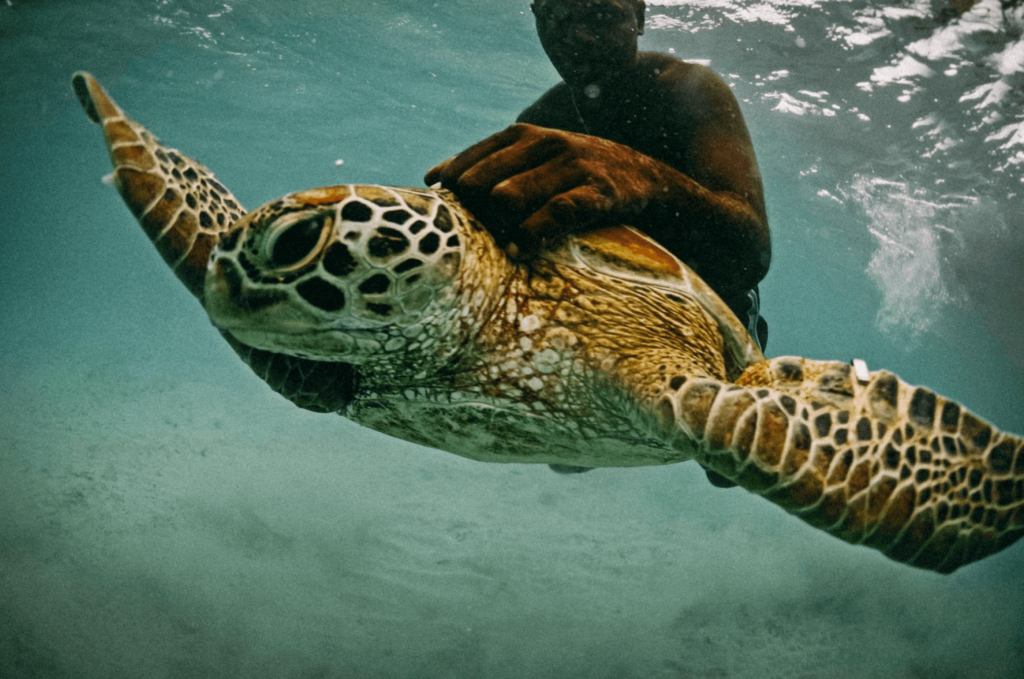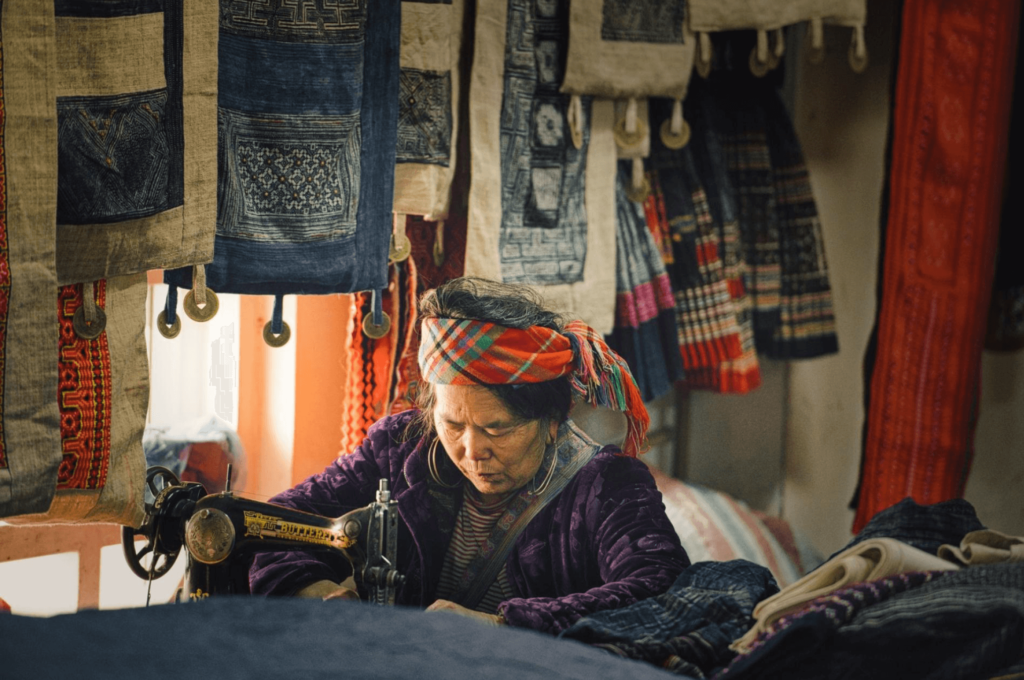Four places where humans are living in sync with the natural world
Tuesday 11 June, 2019 - Author: JOHNNY LANGENHEIM

A fisherman from Lake Ossa takes in his nylon net. Thousands of such nets have been abandoned in and around the lake, polluting it and endangering aquatic species.
While governments, multinationals, and global institutions look for answers to the ecological challenges the planet is currently facing, many local communities are affecting change by taking action at a grass roots level.
LAKE OSSA, CAMEROON
The Lake Ossa Wildlife Reserve in Cameroon is a complex of freshwater systems including rivers and lakes bisected by tracts of jungle, palm oil and rubber plantations. The Reserve is home to a variety of rare aquatic species including African manatees, dwarf crocodiles and soft-shell turtles. The vast majority of people living around the lake rely on it for their livelihoods, mainly through fishing.
But the lake and river ecosystems are subject to a variety of pressures, from overfishing to agricultural encroachment to pollution. This is affecting fish stocks, and it is becoming increasingly difficult for local people to provide for themselves through fishing.
One source of pollution is the thousands of nylon nets that have been lost or discarded over the years. They litter the lake shore and its shallows, inadvertently trapping fish and endangering other aquatic species. In addition, the nets encourage the growth of an invasive plant called salvinia, which is carpeting the lake, robbing it of oxygen and sunlight.
With the help of Net-Works – a project of the Zoological Society of London (ZSL) – local people have been cleaning up the nets in a bid to help the lake recover. At the same time they are able to earn a small income, since the nets are cleaned, weighed and then sent to Europe where they are upcycled into pristine ECONYL thread by Italian company Aquafil, for use in homewares and fashion, including the new range of Prada Re-Nylon bags.
Meanwhile, the communities around Lake Ossa are developing the skills to manage the freshwater ecosystem more effectively, while earning much needed income for things like healthcare and their children’s education.

A ranger and member of the Tetepare Descendant’s Association (TDA) releases a green turtle that has just been tagged as part of the ongoing monitoring programme of marine species. PHOTOGRAPH BY JAMES MORGAN
TETEPARE ISLAND, SOLOMON ISLANDS
Tetepare is the largest uninhabited island in the South Pacific and a unique example of community-driven conservation. The southernmost island of the Solomon Islands’ Western Province, Tetepare is a Mecca for unique terrestrial and marine species. Critically endangered hawksbill and leatherback turtles nest on its beaches, dugongs graze on offshore seagrass beds, and megapods (flightless birds that mate for life) build nest mounds in full view of the three feet long monitor lizards that like to eat their eggs. The island is also home to saltwater crocodiles, reef sharks, unique bird and insect species, and coconut crabs the size of cats.
The species that is most conspicuously absent is humans. Rangers live on neighbouring islands, and visitors to Tetepare are limited to around a dozen at any one time. Whilst most of the Solomon Islands has seen extensive natural resource exploitation through the harvesting of timber and mining, the 3500 members of the Tetepare Descendants Association (TDA) decided to establish a nature reserve and ecotourism initiative on their island.
All are progeny of the original inhabitants of Tetepare, who also happened to be headhunters, according to Allen Tipet Bero, TDA Program Coordinator. Though they are now scattered across the Solomon Islands, they are collective custodians of the island’s unique ecosystems and have successfully protected it since 2000. Harvesting of natural resources such as trochus shells (used to make buttons) is strictly controlled, and there is an eight mile no-take zone surrounding the island.
Besides eco-tourism, rangers and visiting scientists constantly monitor the island’s flora and fauna, from tagging turtles to bird-banding and surveying seagrass coverage. The TDA is the biggest community-led conservation project in the Solomon Islands and Tetepare is one of the few tropical islands anywhere to have escaped logging. It is a unique repository of biodiversity protected by a community that has chosen conservation over short term profit.

Dom Felix hosts small groups of visitors looking to experience both the local culture and the rich biological diversity of the Osa Peninsula. PHOTOGRAPH BY JOHNNY LANGENHEIM
OSA PENINSULA, COSTA RICA
“The most biologically intense place on earth.” That’s how National Geographic magazine described Costa Rica’s Osa Peninsula, an isolated promontory surrounded by the Pacific that is home to 2.5 per cent of the world’s biodiversity, including pumas, tapirs, ocelots anteaters and howler monkeys, as well as more than 350 bird species and marine animals including manta rays, sharks, sailfish, and 25 species of cetacean.
Most of the Osa Peninsula is taken up by the Corcovado National Park – part of a network of protected areas that accounts for a quarter of Costa Rica’s landmass. Costa Rica took its conservation cues from the United States parks system back in the 70s, and the approach has proven successful. However, community-led approaches are relatively new here.
Historically, most of the communities around the Corcovado National Park have had limited access to livelihoods beyond poaching, gold prospecting, and subsistence farming. In a bid to preserve both the cultural and natural heritage of Osa, local people have set up a community-based tourism initiative, Caminos de Osa (Pathways of Osa). So far more than 150 entrepreneurs have joined the association, combining their extensive knowledge of the region with training in enterprise and sustainable tourism.
Former poachers are now nature-based tourism guides, homestay hosts and restaurateurs, providing visitors with a uniquely personalised insight into the region and its many natural treasures, while maintaining them for future generations.

A member of one of the ‘hill tribe’ ethnic groups that populate mountains of Sapa Province embroiders a handmade hemp textile. PHOTOGRAPH BY JAMES CARNEGIE
SAPA, VIETNAM
Sapa Province – a mountainous hinterland along the north west border between Vietnam and China – is home to a variety of ethnic groups that tend to be lumped together under the term hill tribes. Groups like the Hmong, Xa Pho and Dao are actually relative newcomers to Vietnam – semi-nomadic farmers and pastoralists originating from China who first arrived in the area around 300 years ago.
Like many nomadic groups, the hill tribes have found themselves somewhat marginalised. As latecomers, they have tended to be confined to higher altitudes where agricultural productivity is relatively low. They grow crops like corn and cassava, and cotton for making textiles and clothing. Their tradition of weaving and dyeing has gained international attention, thanks to its handmade, sustainable approach and unique batik and Ikat designs.
Sapa is an increasingly popular destination for tourists, drawn as much by hill tribe culture as the dramatic mountain vistas. The irony is that groups like the Hmong risk being economically excluded from the burgeoning tourism industry. Ethos: Spirit of the Community is a social enterprise that is trying to make sure this doesn’t happen. By working with communities dotted around Sapa – the eponymous capital of the province – Ethos provides tours and treks that are big on cultural encounters, and that are driven by the communities themselves.
Ethos’s guides – all of them local – are responsible for what happens on each tour, bringing visitors into their world rather than sticking to rigid itineraries. Environmental footprint is kept to a minimum: small groups trek to hill tribe villages, staying with families, eating traditional food sourced at local markets and learning about sustainable weaving and dyeing techniques. As well as generating income for their families, communities are able to raise additional funds to support education and healthcare programs, since hill tribe communities lack access to both.